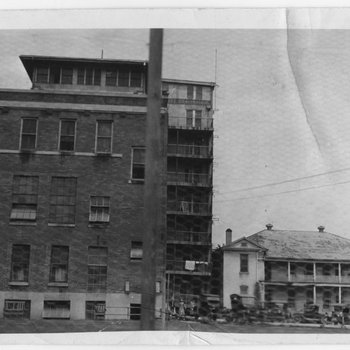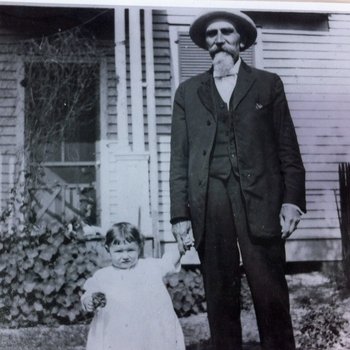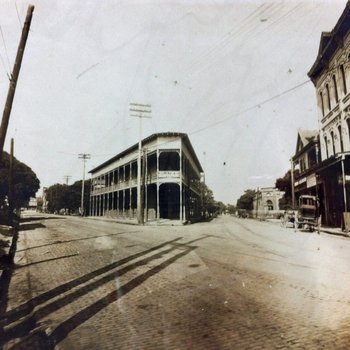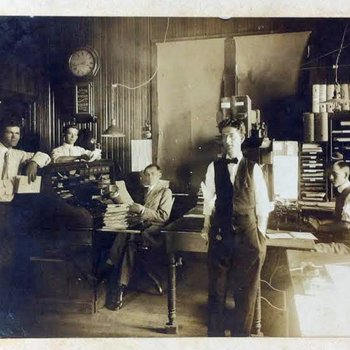Celebrating 100 Years of The Texas Medical Center Library: 1915-2015
Houston in 1915...
The early years of the twentieth century were important ones for Houston. The 1910 census gave the city’s population as 78,900, and the city directory estimated that it had nearly doubled to 129,570 by 1914.
The devastation of the 1900 Storm turned businesses and investors away from Galveston. President Theodore Roosevelt approved funding for the Ship Channel in 1902; it would open at last in 1914, passing the economic advantages of a port city to Houston. The discovery of oil at Spindletop, near Beaumont, in 1901 would also be a boon for Houston, which had established itself as an important railroad hub. By 1913, twelve oil companies were based here, founding an industry that continues to drive the city’s growth. Houston’s railroads also made it invaluable to the east Texas lumber industry.
The city’s rapid expansion at the turn of the twentieth century enabled men such as George Hermann, and Jesse Jones to make fortunes in real estate, and large sums of this money would be put to good cultural and philanthropic use.
Houston’s first true public library, the Houston Lyceum and Carnegie Library, opened in 1904 with the aid of the Carnegie Library Association and several local organizations. As of 1915, it was the only city in the South that also had a Carnegie Library for minorities (established 1907). The Houston Museum and Scientific Society, Inc., was established in 1909 and began the collection of natural curiosities that would become the Houston Museum of Natural Science.
William Marsh Rice amassed a fortune in the late nineteenth century, investing in land, railroads, timber, and cotton, and began plans for an institution of higher learning, to be founded after his death, in 1891. Rice University opened in October 1912. Although it was segregated until the mid-1960’s, the university was coeducational from the beginning and did not charge tuition until 1964.
The city’s first hospital, St. Joseph’s, opened in 1887. It was followed by Baptist Sanitarium, now part of the Memorial Hermann system, in 1904. The Southern Pacific Hospital was established around 1913 for employees of the Southern Pacific Railroad; its former home on the north side still serves as the Thomas Street Clinic. There were also numerous private hospitals and sanitariums, such as the Blair Sanitarium pictured.









